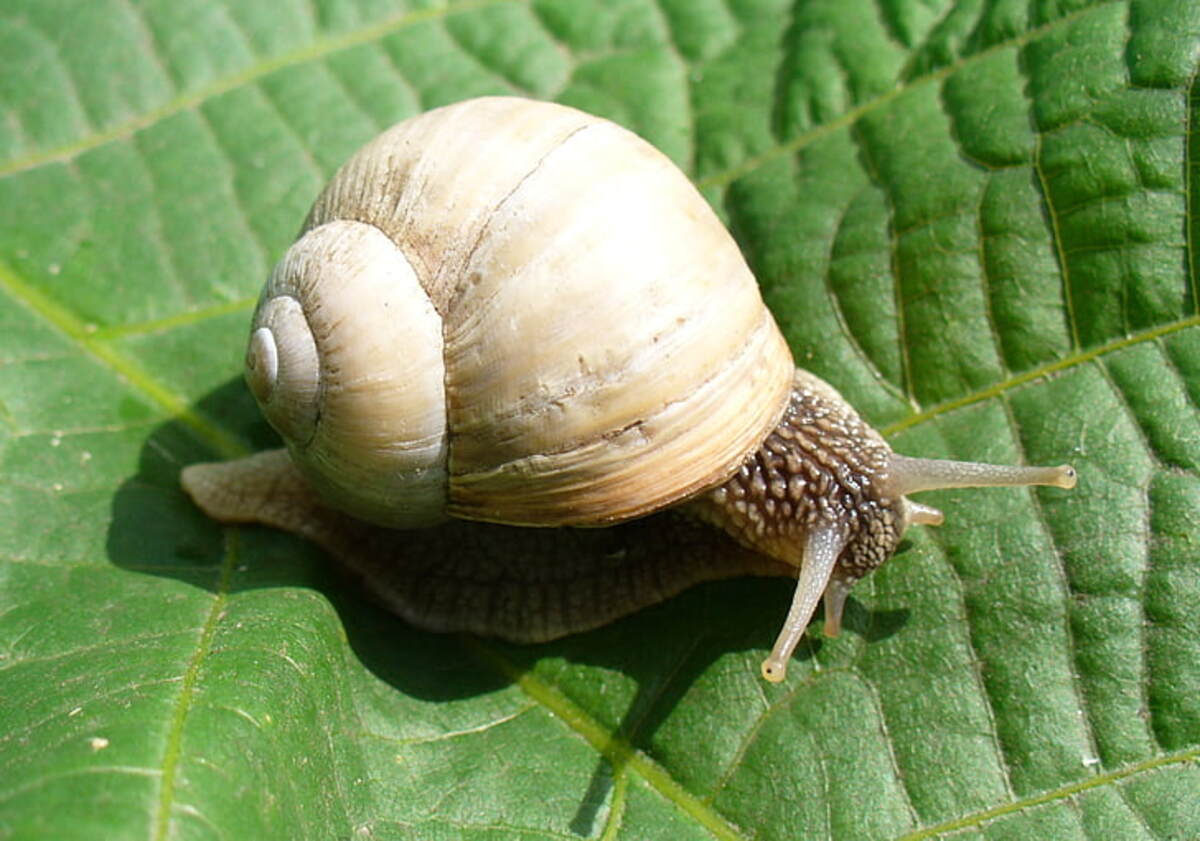
You’ve probably seen them: brown garden snails chewing irregular holes in your garden’s greenery, as well as fruit, and leaving mucous trails on plants. You may have hunted these land snails to annihilate them to prevent their destructive ways, but here’s another way to get rid of them. Eat them. But really, now, can you eat garden snails?
Yes, you can. Archeological evidence suggests that hunter-gatherers ate these mollusks as early as 30,000 years ago. Romans ate snails, and sometime in their history—when is unclear—people in France started eating them, too. In fact, “escargot” means “snail” in French. Today, escargot is served in restaurants and at parties throughout the world.
What Snails Can You Eat?
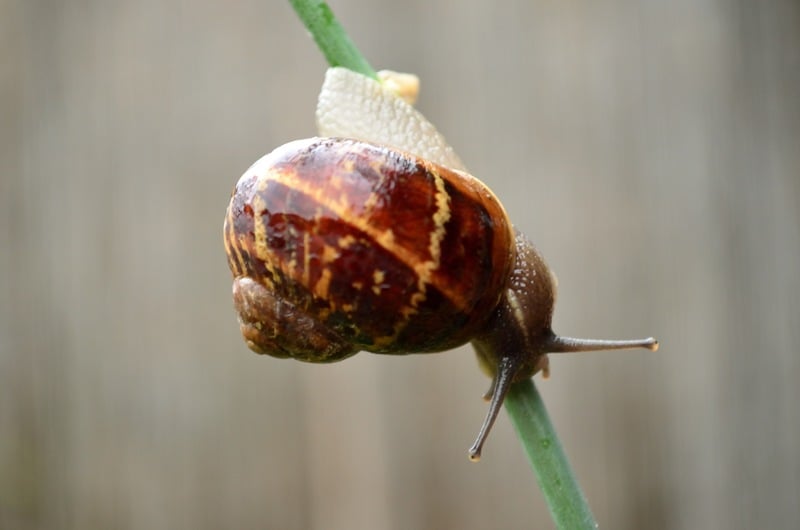
Garden snails are edible. The most common type of snail for culinary purposes in the United States is the brown or European garden snail (Cornu aspersum, formerly Helix aspersa).
Where You Can Find It: The common brown garden snail originated in the Mediterranean. In the United States, though, this species, also called the “petit gris snail,” can be found on the West and East Coasts and in the Southeast.
What It Looks Like: Classified by the US government as a garden pest, the creature itself is brownish gray, sporting a pale line along its back. Its shell appears wrinkled and a bit glossy, measuring approximately 1 to 1 ⅝ inches in diameter and 1 to 1 ⅜ inches high. The snail shell has four or five brownish spiral bands and yellow flecks or even streaks.
Recipes
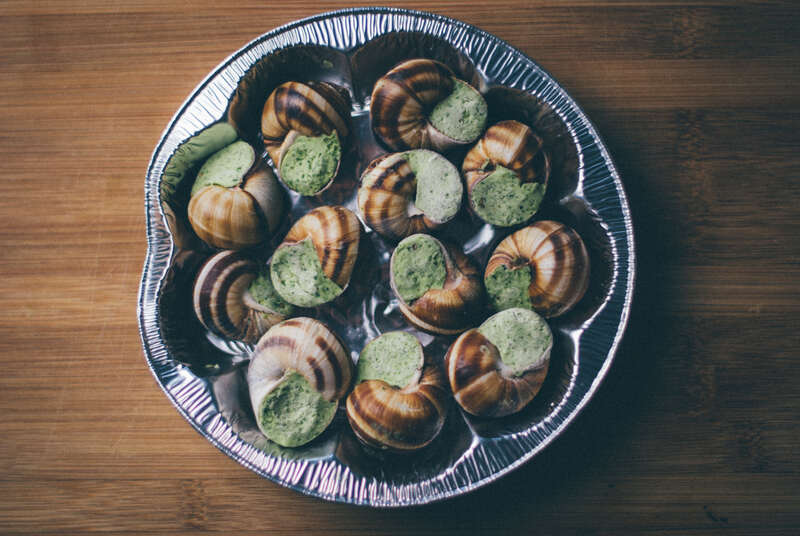
Cooking snails in garlic butter is perhaps the simplest recipe for snails. Peconic Escargot, a snail farm, offers cooking tips and recipes. These include, but are not limited to, babbalucci (Sicilian snails stew) and smoky grilled snails.
Taste Atlas lists 10 common snail recipes. Not enough variety for your palate? Escargot World has 101 recipes for you to try. Or type “snail” or “escargot” into your favorite recipe site and see what pops up.
Going Hunting
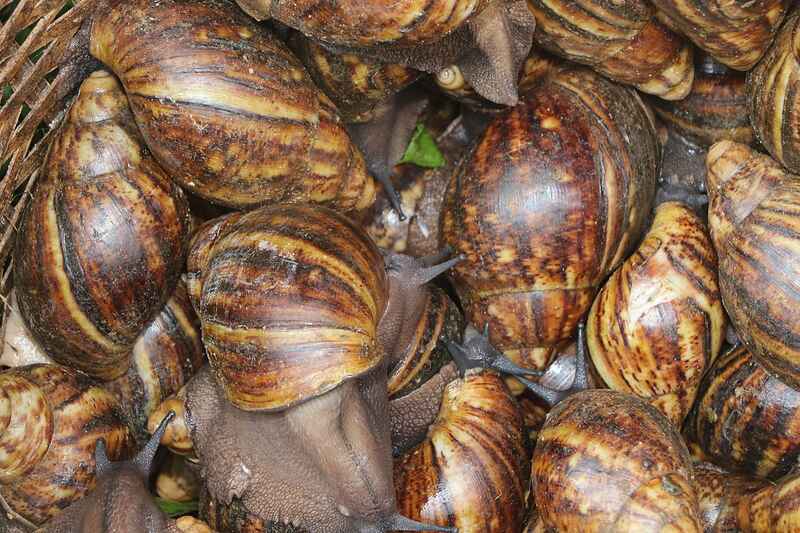
Before you put them in any recipe, however, you must channel your inner hunter-gatherer to find and then prepare your snails.
Brown garden snails prefer an undisturbed habitat with moisture. This invasive species eats vegetables, flowers, fruit, and even weeds. They also consume decaying material. Collect around 20 snails for two people, which is a small batch.
Collecting Your Snails: Always wear rubber gloves when handling this species of snail. Search for them at night or after a rain. One of the best ways to gather common brown garden snails is to use a board with rocks at its corners or 1-inch runners. Look under the boards in the morning. You can also use melon rinds turned upside down.
Securing Your Snails: Once you find your stash, wash your prizes and place them in a container, covering them with a screen that allows air circulation. Poking holes through lids works well, or use a light cloth with a rubber band.
Snails like cool, dark places. Don’t keep them outdoors; other pests, such as rats and opossums, may find and eat them. Clean the container daily. (We’re not kidding about this.) Lightly mist the snails with water but don’t keep them in standing water.
Purging Your Snails
You have no idea what the little critters have been exposed to. Such things may include:
- Snail killers (molluscicides)
- Insecticides and other pesticides
- Chemical fertilizers in your garden or the surrounding area
- Any pathogens that may live in their digestive systems
So first, you must purge your snails. Purging involves cleansing the snail’s digestive tract to replace the toxins that could be lurking there. After you have placed your catch in a container, start the purging process.
With Food: This involves feeding them a strict diet of greens then cornmeal or oatmeal to turn their poo white or even cleaned carrots and herbs to turn their poo orange, a Gordon Ramsay tip.
Without Food: You can also give them no food (only water) in a process called “starving.” This ensures that the snails have no poo in their systems.
After 7 to 10 days of purging, prepare to cook snails.
Preparing Snails for Cooking
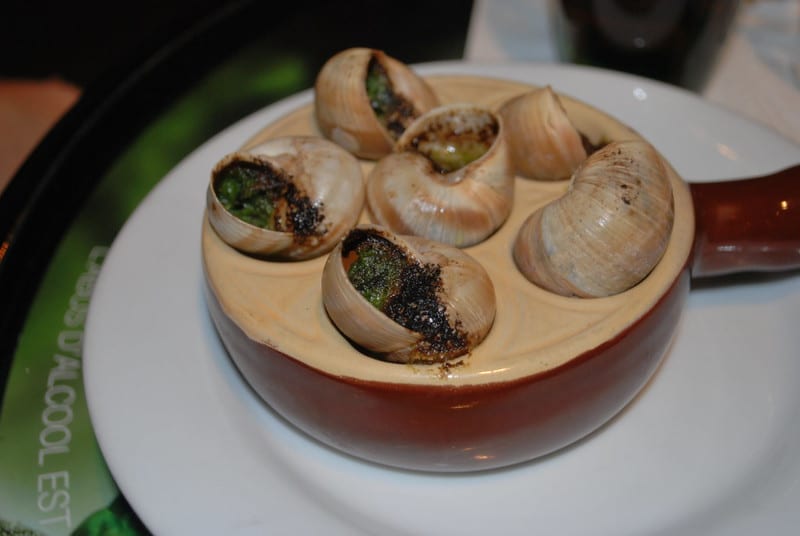
Photo Credit: Sarah Kelemen Gerber / Flickr / CC BY 2.0
Before you cook your snails, you must cook them. Yes, you read that correctly. Known as “parboiling,” this preparation process rids your snails of the dirt and the mucus they’re so famous for.
Clean the Live Snails
- Using gloves, drop the snails into a container of water. Discard any floating snails; they’re dead.
- Mix the snails in the water and clean them by hand two or three at a time. Pour out the water when it gets dirty.
- Rinse the snails until the water is mostly clean. Drain.
Boil the Snails
- Fill a pot with water and plenty of salt. Set it on the stove to boil.
- Once the water is roiling and, again, wearing gloves, drop the snails into the pot.
- Boil for 3 to 5 minutes. Do not undercook.
- Drain the pot and place the snails in a colander, rinsing them under cold running water.
- When the snails are cool, use toothpicks, tweezers, or a small fork (such as a crab fork) to pull the meat out of the shells.
There may be mucus involved in the last step. Don’t worry; you’ll get rid of that next.
Clean the Snail Meat
- Prepare a pot with the following ratio: three-fourths water and one-fourth distilled white vinegar. Put this mixture on to boil.
- Place the snail meat in the pot with the boiling water-vinegar mixture for 3 minutes.
- Pour off the water and rinse the snails until they are rid of the boiled-off mucus, which looks like curdled egg.
Now you’re ready to work your culinary magic on your snails.
Preparing Snail Shells for Your Recipes
Handle the empty snail shells gently. Boil a pot of 4 cups of water with 2 tablespoons of baking soda. Add the shells and cook for approximately 3 minutes. Then drain, rinse, and pat dry. Set them on a baking sheet and dry them in a hot oven.
FAQ
There aren’t if you want to prepare them safely. Here’s your shortcut: Pick up already-prepared snails from a local market. They can come in a can, often found around the canned tuna, or you may be able to purchase them fresh, already purged and cleaned.
Don’t eat snails raw or undercooked. They can carry a disease called the rat lungworm (Angiostrongylus species). This disease can cause headaches, a stiff neck, skin tingling or pain, a low fever, nausea and vomiting, and, rarely, neurological diseases or death.
You can, but fixing snail caviar is hard. You’d likely need to breed your own snails, a “very labour-intensive and heavy manual work” called “heliciculture,” or go digging about in your garden’s dirt on the off chance you’d find some eggs. You can buy caviar d’escargot, but be warned! It is expensive.
According to Snails-House, just about every type of wine can be served with escargot. It depends on your recipe. White wines go with “light meals.” They suggest pink or sparkling wines for escargot with appetizers such as cheese and fruit. Spicy dishes call for red wines.
Getting Ready for Guests
You’ll find escargot a versatile delicacy. Once your snails have been purged and cleansed, you can fix them as snacks for yourself, a meal for your family, or appetizers for parties. While you’re researching and preparing escargot recipes for your next dinner party, let one of our local lawn care pros tidy up the lawn so you don’t have to.
Additional sources: Tasting Table
Main Image Credit: Hippopx / CC0 1.0